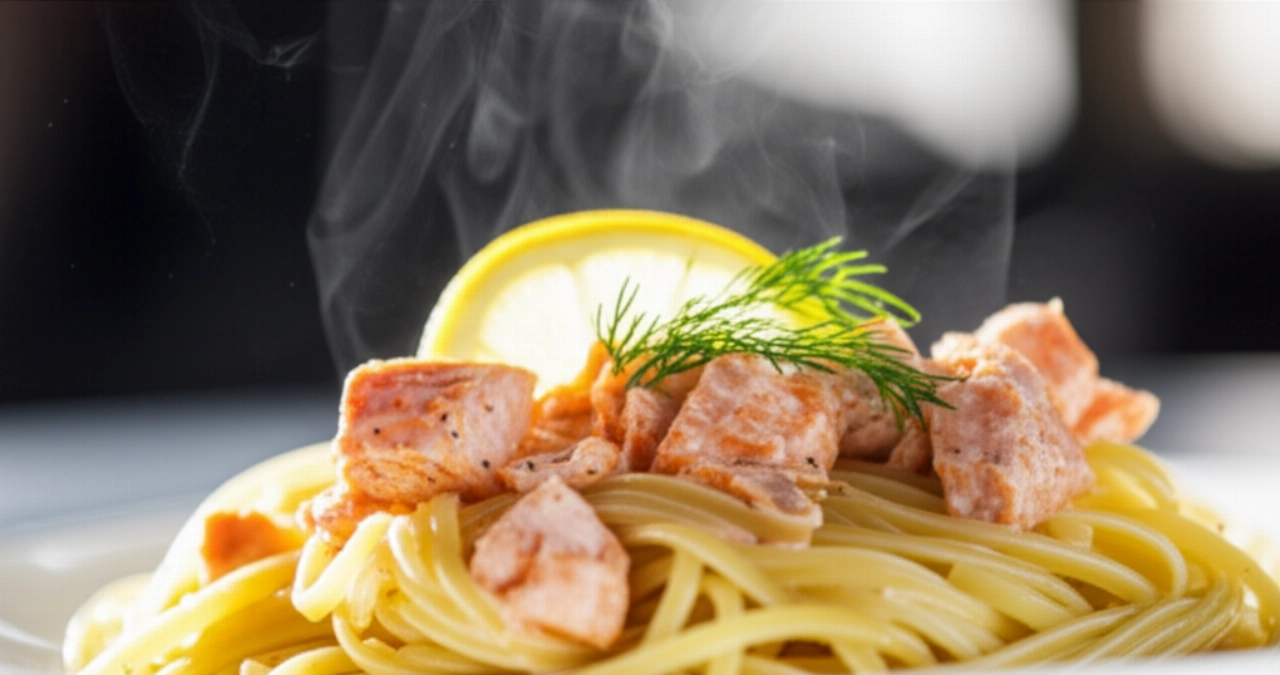Dreaming of that Cacio e Pepe pasta dish that makes you close your eyes at the first bite? That velvety, perfectly peppery cream that blends seamlessly with the pasta, without a single lump, without a single mistake?
Too often, Cacio e Pepe turns into a nightmare: cheese that clumps, dry pasta, or worse, an 'omelet' effect that makes you regret trying. It seems like a simple recipe, but it hides pitfalls that can ruin precious time and ingredients.
Get comfortable, because today I'm revealing all the secrets to preparing the perfect Cacio e Pepe pasta, the true Roman one, that will make you feel like a real chef. Not just a recipe, but an infallible guide that will guarantee you tremendous success. Here, failure is not an option!

Smart Ingredients: The Choice That Makes All the Difference for Cacio e Pepe
Cacio e Pepe is an ode to simplicity, but every ingredient must be chosen with care.
- Pecorino Romano PDO: Not just any cheese, but Pecorino Romano PDO, aged just right. It's the salty and savory heart of the cream. Grate it finely at the moment of use; do not use pre-grated cheese, or you won't achieve the right consistency.
- Black Peppercorns: Forget pre-ground pepper! Only black peppercorns, freshly ground at the moment, preferably with a mortar and pestle. Its intense and spicy aroma is essential to balance the saltiness of the Pecorino.
- Quality Pasta: Tonnarelli are the traditional Roman choice, with their rough surface that captures the cream. Alternatively, high-quality spaghetti or rigatoni, preferably bronze-drawn, which release more starch during cooking.
- Pasta Cooking Water: This is the secret ingredient, the liquid gold! Rich in starch, it's what allows the Pecorino to melt and create that velvety, enveloping cream. Never throw it away!

3 Common Mistakes That Ruin Your Cacio e Pepe (and How to Avoid Them)
Many get discouraged with Cacio e Pepe, but often it's just a matter of knowing the pitfalls.
- Using Water That's Too Hot (or Cold) for the Cream: The cooking water should be hot, but not boiling, when you add it to the Pecorino. If it's too hot, the cheese 'fries' and forms lumps. If it's too cold, it won't melt. The right temperature is key for a perfect emulsion.
- Grating the Pecorino in Advance: Grated Pecorino oxidizes and loses moisture. Grate it finely just an instant before using it to ensure maximum creaminess.
- Not Emulsifying Vigorously: Emulsifying (mantecatura) is the magical moment. Don't be afraid to mix vigorously and quickly. It's the movement that creates the perfect emulsion, incorporating air and binding the ingredients.

Grandma's Secret: The Trick for an Infallible Cacio e Pepe Cream
My grandmother, the queen of Roman cuisine, taught me a trick for Cacio e Pepe that few know. She used to say: 'Patience is the salt of cooking, but speed is the pepper of Cacio e Pepe!'
Her secret was simple yet brilliant: before combining the Pecorino with the cooking water, she would mix it with a small portion of the ground black pepper. This helps the pepper release its essential oils better and perfume the cheese, making the cream even more aromatic and homogeneous. And then, the emulsification should be done off the heat, with a decisive, circular, almost whisking motion, to incorporate air and make the cream frothy.
Let's Prepare Cacio e Pepe Pasta Together: The Step-by-Step Guide to Success
Ingredients (for 2 servings):
- 200 g Tonnarelli (or spaghetti/rigatoni)
- 150 g aged Pecorino Romano PDO
- 10 g black peppercorns
- Pasta cooking water (as needed)
Required Tools:
- Large pot for pasta
- Large bowl for the cream
- Mortar and pestle or pepper mill
- Kitchen tongs or ladle
Instructions:
- Cook the Pasta: Bring plenty of unsalted water to a boil (Pecorino is already very salty!). Calculate about 1 liter of water per 100g of pasta. Once boiling, add the tonnarelli and cook them according to the package instructions, but drain them one minute before the suggested time.
- Prepare the Pepper: While the pasta cooks, finely grind the black pepper in a mortar and pestle or with a pepper mill. Put about two-thirds of it into a non-stick pan and toast it over medium-low heat for a few seconds, until it releases its intense aroma. Add a ladleful of pasta cooking water and let a sort of peppery 'cream' form. Set aside the remaining pepper for finishing.
- Prepare the Pecorino Cream: In a large bowl, finely grate the Pecorino Romano. Add about one-third of the toasted pepper from the pan (the one in the 'cream'). Start adding the pasta cooking water, one tablespoon at a time, stirring vigorously with a whisk or fork. The water should be hot, but not boiling, to prevent the cheese from clumping. Continue stirring until you get a smooth, thick, lump-free cream. It should have the consistency of a fluid batter.
- Perfect Emulsification: Drain the pasta directly into the pan with the pepper cream, using tongs. Do not discard the cooking water! Immediately add the Pecorino cream and, off the heat, begin to emulsify vigorously. If the pasta seems too dry, add another ladleful of cooking water, always a little at a time, continuing to stir. The secret is to create a perfect emulsion between the pasta's starch, the cheese's fat, and the water.
- Serve and Enjoy: As soon as the cream is enveloping and homogeneous, plate immediately. Sprinkle with the remaining freshly ground black pepper and, if desired, with another sprinkle of Pecorino Romano. Serve piping hot and enjoy your masterpiece!
Tips and FAQs about Cacio e Pepe Pasta
- Can I use other types of cheese? No, for true Roman Cacio e Pepe, it's essential to use only Pecorino Romano PDO. Other cheeses will not provide the same creaminess and flavor.
- Why did my cream clump/thicken? Most likely, the cooking water was too hot, or you added too much water at once. Remember: hot but not boiling water, added gradually and stirred vigorously.
- Can I prepare the cream in advance? Not recommended. Cacio e Pepe cream should be prepared and emulsified at the moment to ensure maximum creaminess and freshness. It would thicken.
- What's the right amount of cooking water? There's no fixed amount. It depends on the starch released by the pasta and the desired consistency. Always add one ladleful at a time until you achieve the perfect creaminess.
- Can I add oil or butter? Absolutely not! True Cacio e Pepe does not involve adding fats. The creaminess comes from the emulsion between the pasta's starch, the Pecorino's fat, and the cooking water.
There you have it! Now you don't just have a recipe, but all the secrets to bring a Cacio e Pepe Pasta to your table that tastes of Rome, tradition, and pure magic. A dish that will make you feel like a true guardian of authentic flavors.
Don't be afraid to experiment, but start from this solid base, and you'll see that applause, and requests for seconds, will not be lacking. Cooking is an act of love, and this Cacio e Pepe is proof of that!
Have you tried our recipe? We're very curious to see your masterpiece! Leave a comment below, tell us how it went, or share a photo on Instagram tagging @SearchRecipes. If you loved this Cacio e Pepe, you can't miss our recipe for Perfect Carbonara Pasta or a king's main course like the Original Saltimbocca alla Romana.





